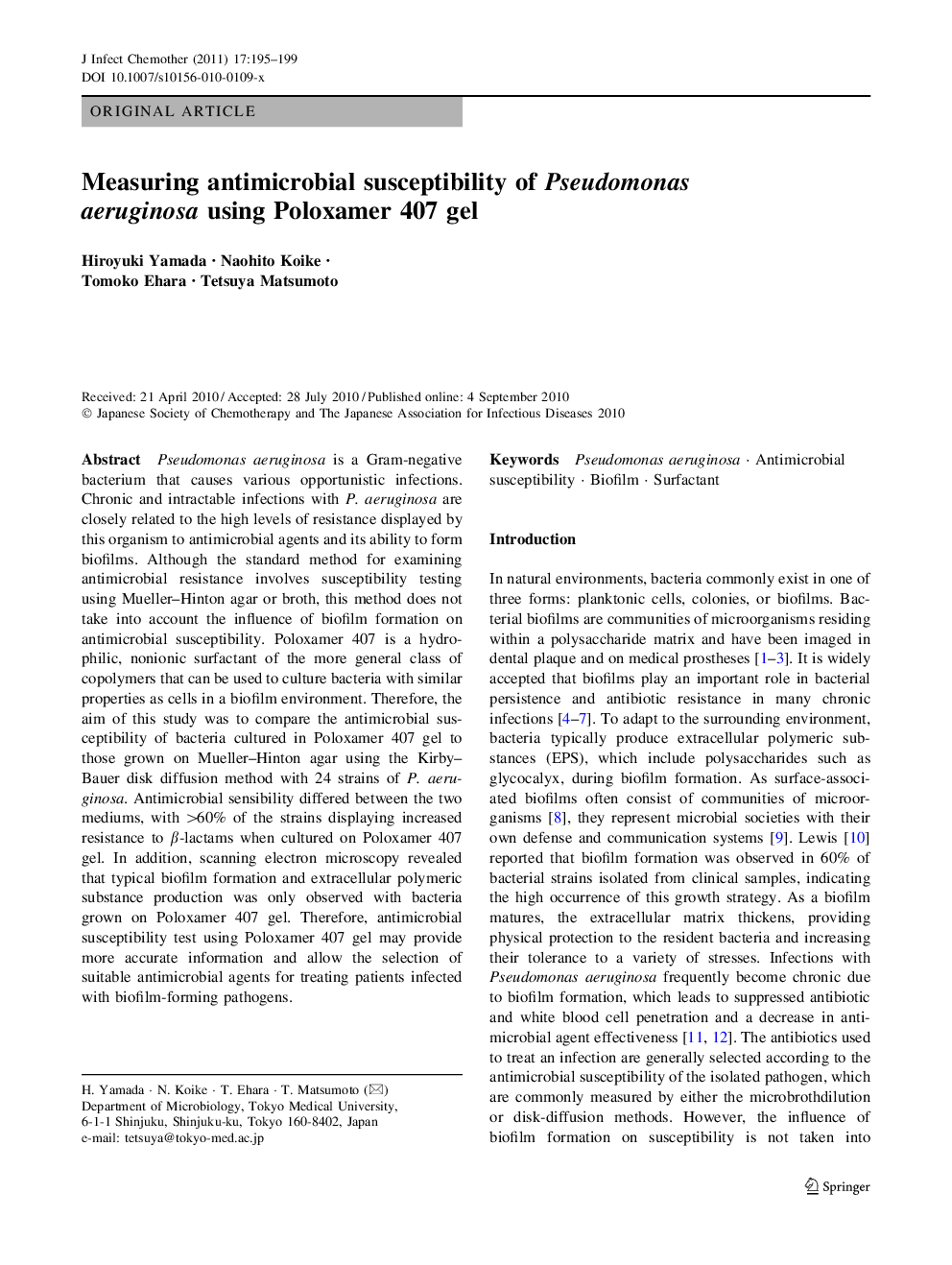| کد مقاله | کد نشریه | سال انتشار | مقاله انگلیسی | نسخه تمام متن |
|---|---|---|---|---|
| 3377263 | 1219970 | 2011 | 5 صفحه PDF | دانلود رایگان |

Pseudomonas aeruginosa is a Gram-negative bacterium that causes various opportunistic infections. Chronic and intractable infections with P. aeruginosa are closely related to the high levels of resistance displayed by this organism to antimicrobial agents and its ability to form biofilms. Although the standard method for examining antimicrobial resistance involves susceptibility testing using Mueller–Hinton agar or broth, this method does not take into account the influence of biofilm formation on antimicrobial susceptibility. Poloxamer 407 is a hydrophilic, nonionic surfactant of the more general class of copolymers that can be used to culture bacteria with similar properties as cells in a biofilm environment. Therefore, the aim of this study was to compare the antimicrobial susceptibility of bacteria cultured in Poloxamer 407 gel to those grown on Mueller–Hinton agar using the Kirby–Bauer disk diffusion method with 24 strains of P. aeruginosa. Antimicrobial sensibility differed between the two mediums, with >60% of the strains displaying increased resistance to β-lactams when cultured on Poloxamer 407 gel. In addition, scanning electron microscopy revealed that typical biofilm formation and extracellular polymeric substance production was only observed with bacteria grown on Poloxamer 407 gel. Therefore, antimicrobial susceptibility test using Poloxamer 407 gel may provide more accurate information and allow the selection of suitable antimicrobial agents for treating patients infected with biofilm-forming pathogens.
Journal: Journal of Infection and Chemotherapy - Volume 17, Issue 2, 2011, Pages 195-199